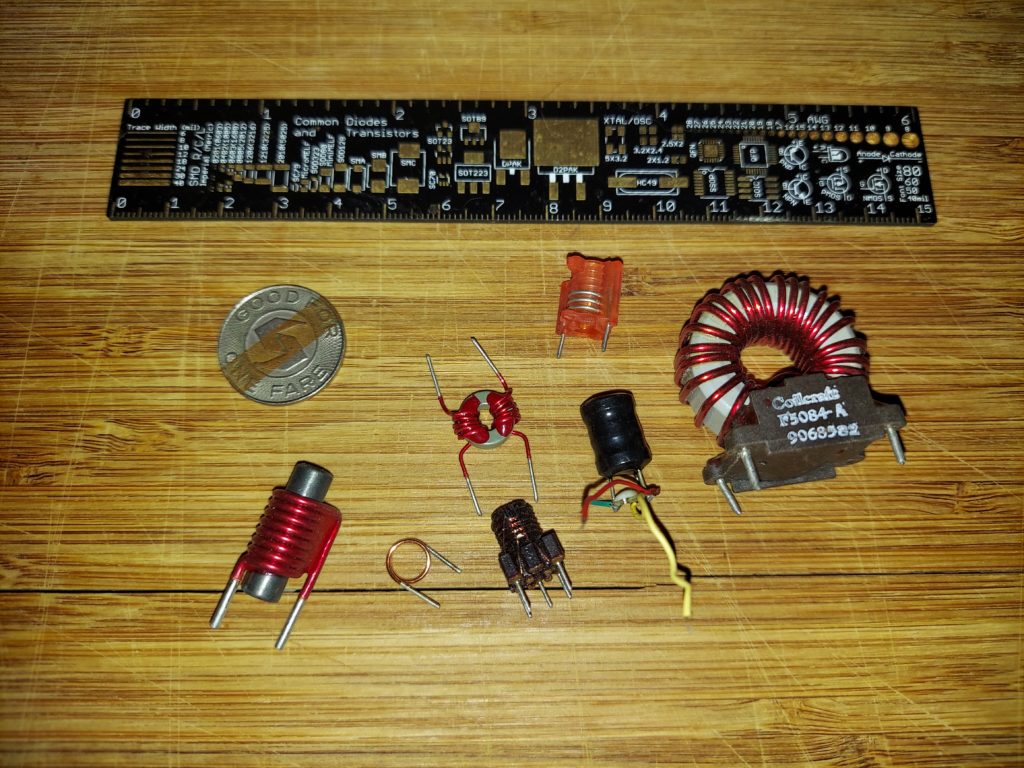
An inductor is probably the simplest electronic component. It is literally a wire, bent into a coil around a core of either air or another substance. Although all real inductors have some resistance (unless made of superconductors), inductors’ usefulness results from their electromagnetic properties — both as electromagnets and in electronic circuits.
Just as a resistor has a characteristic law — Ohm’s Law — that it follows, inductors follow a similar law. (V = L*di/dt) The difference is, inductors develop a voltage proportional to the change in current per unit of time — not the flow of current itself. This property is at the heart of many interesting, useful circuits that make use of inductors:
- Chokes: Most simply, inductors are used to block high-frequency signals and pass lower-frequency ones. So a RL filter, with the inductor in series, would be a low-pass filter. With the inductor in parallel with the load, it would be a high-pass filter.
- Resonant circuits: An inductor/capacitor pair can form a resonant circuit, suitable for tuning in radio signals of a particular frequency, or generating AC signals as part of an oscillator.
- Voltage multiplication: Inductors are often used as the energy-storage elements of switched-mode (buck and/or boost) power supplies. If current flowing through an inductor is suddenly blocked, a high voltage appears across the inductor, which can be collected in a capacitor.
- Transformers: Two magnetically-coupled coils can convert high voltage to high current or vice-versa.
Basic model
The characteristic equation for inductors is V = L*di/dt. Voltage across the inductor is proportional to its inductance in henries, times the time derivative of current (in amps per second, which sounds like a natural unit, but measures rate of change of the flow of charge.)
So, inductors oppose changes in current flow. The voltage across an inductor, by Lenz’s Law, is in the polarity which will oppose the change in current flow. If no current is flowing, the voltage will oppose current flow. If the current is decreasing, the energy in the inductor will act to keep the current flowing.
At DC, inductors are simply wire, and have resistance but no reactance, since di/dt is zero. With AC, reactance is proportional to frequency — Xc = 2*pi*f*L.

